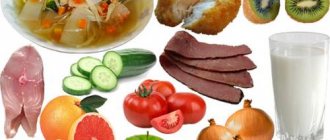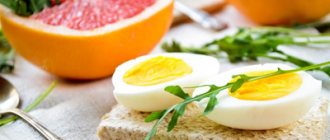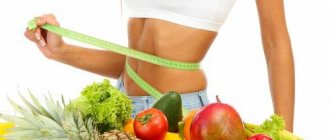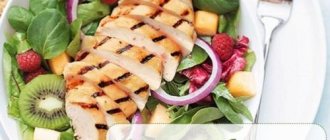Dean Ornish: The Stress Diet and Your Heart
Dr. Dean Ornish's diet has become famous for its proven effectiveness in the fight against heart disease. This is not only a diet, but also a new look at your lifestyle. It includes switching to a vegetarian diet, exercise, yoga, meditation, stress management and constant health care.
The key point is eating behavior. The Ornish diet involves a complete abstinence from animal fats and limiting the consumption of vegetable fats. Excess of these elements, accumulating in the body, provokes excess weight gain, which causes heaviness, lack of strength and problems with the heart and blood vessels. Vegetable foods replace animal fats: vegetables, fruits, legumes.
The second difference between the Ornish diet and modern popular diets is the absence of a calorie deficit. You need to eat often and in small portions. This way the body gets used to the constant supply of food and does not experience hunger. But you don't need to count calories. The principle of the Ornish diet is the quality of dishes, not their volume.
Diets, especially therapeutic ones, are inextricably linked with a healthy lifestyle and exercise. Dr. Dean thinks so too. It is necessary to add physical activity to your diet: daily walks, running, fitness, yoga. Activities are chosen depending on the capabilities of the body.
When transitioning to a new lifestyle, the emotional component is important. The author of the complex suggests engaging in spiritual practice - meditation. With its help, psychological balance and harmony with oneself are achieved. An equally important part is the support of loved ones. Pay more attention to your relationships with your loved ones. Strong relationships are a sure way to stress-free and healthy. It is our loved ones who give us peace and joy, which means there will be no desire to look for these emotions in food.
Authorized Products
The Ornish diet implies a special type of nutrition based on a certain ratio of nutrients: proteins, fats, carbohydrates:
- fats - 10% of the daily diet;
- proteins - 25%;
- carbohydrates - 75% (these are complex, healthy carbohydrates).
The meal plan offers an almost complete elimination of fats. 10% is the small amount found in vegetables, fruits, and cereals. Therefore, when purchasing prepared products, you should carefully study the labels. For beginners, it is best to stick to a ready-made menu or create it yourself in advance, calculating the calorie content, protein, fat, and carbohydrate content. Dean Ornish also recommends calculating the amount of cholesterol - it should be no more than 5 mg daily. There are special tables for this. For comparison: in vegetables the amount of cholesterol tends to zero, and in meat products it is about 100-700 mg per 100 grams of product.
Meals should be fractional: this way the feeling of hunger will not be felt, since there are no strong surges in sugar, there is a gradual increase in insulin, glucose, and triglycerides in the blood. In addition, the daily diet should be supplemented with a sufficient amount of clean drinking water. The consumption rate is individual for everyone, on average it is 1.5-2 liters.
The Ornish diet allows the consumption of the following types of foods:
| Legumes: green or brown lentils, green peas, beans |
| Cereals, cereals: oats, brown rice, buckwheat, millet, corn flakes, barley |
| Vegetables: white cabbage, cauliflower, Peking cabbage, cucumbers, zucchini, tomatoes, eggplant, carrots, bell peppers, beets, potatoes, all types of greens. |
| Fruits and berries: green apples, pears, apricots and peaches, blueberries, raspberries, strawberries, currants. |
Based on this table, you can create your own diet, calculate calorie content, protein, fat, and carbohydrate content. But this is quite difficult for beginners, so it is better to turn to specialists.
Nutrition rules
Dr. Dean Ornish has developed his own formula for the percentage of BJUs - Proteins, Fats, Carbohydrates in the diet:
- Proteins – 20%
- Fats – 10%
- Carbohydrates – 70%
Advantage is given to complex carbohydrates and fiber. It is forbidden to include simple ones in your diet. Fats are acceptable for consumption, but in extremely small quantities. Protein is the building material of the body. It must be present in the diet, but, like fats, in a small volume. Therefore, the diet can be considered not only vegetarian, but also low-fat.
Another difference from popular diets is that Ornish suggests dividing foods not into 2 lists - allowed and prohibited, but into 3.
What you need to eat:
- Fruits and berries;
- Vegetables and greens;
- Cereals;
- Legumes.
Products allowed in small quantities:
- Low-fat dairy products;
- Eggs, preferably white;
- Low fat cheeses;
- Salt - minimal use.
Products that are prohibited for consumption:
- Fast food;
- Floury and sweet;
- Carbonated drinks and packaged juices;
- Alcohol;
- Fish and seafood;
- Meat;
- Fatty dairy products;
- Egg yolk;
- Olives;
- Caffeine (only green tea is acceptable);
- Nuts and seeds.
If you change your lifestyle, you need to start by quitting smoking and drinking alcohol. These bad habits will not only hinder weight loss, but destroy your health.
It is important to maintain your daily water intake. For an adult, it ranges from 1.5 to 1.8 liters per day. Water starts the body's work, flushes out accumulated toxins and speeds up the metabolic process.
Fully or partially limited products
Dean Ornish believes that it is the excessive consumption of red meat, fats and simple carbohydrates that is the cause of the high percentage of cardiovascular diseases in modern society. In addition, to have a healthy heart, you must definitely give up smoking, coffee and drinking alcoholic beverages, and instead spend more time on meditation and aerobic exercise.
The list of completely prohibited products is small, it includes:
- red meat;
- pork;
- bakery and confectionery products;
- sugar and honey, preserves and jams;
- fatty dairy and fermented milk products, cheeses;
- margarine, spreads, cream, butter.
You should limit yourself in such products as:
- seeds, nuts, olives, avocados;
- fish;
- chicken fillet;
- low-fat, milk-containing drinks, sauces and light dressings;
- corn flakes and crackers.
Ornish food separation
Table of prohibited products
| Proteins, g | Fats, g | Carbohydrates, g | Calories, kcal | |
Vegetables and greens | ||||
| canned eggplant caviar | 1,7 | 13,3 | 5,1 | 148 |
| fried zucchini | 1,1 | 6,0 | 6,7 | 88 |
| fried potato | 2,8 | 9,5 | 23,4 | 192 |
| olives | 2,2 | 10,5 | 5,1 | 166 |
Fruits | ||||
| avocado | 2,0 | 20,0 | 7,4 | 208 |
| canned pineapples | 0,1 | 0,1 | 14,0 | 57 |
| canned peaches | 0,5 | 0,1 | 13,7 | 97 |
Nuts and dried fruits | ||||
| walnuts | 15,2 | 65,2 | 7,0 | 654 |
| cashew | 25,7 | 54,1 | 13,2 | 643 |
| seeds | 22,6 | 49,4 | 4,1 | 567 |
| pistachios | 20,0 | 50,0 | 7,0 | 556 |
Flour and pasta | ||||
| pasta boiled with fat | 3,4 | 5,0 | 19,0 | 135 |
| homemade noodles | 12,0 | 3,7 | 60,1 | 322 |
| ravioli | 15,5 | 8,0 | 29,7 | 245 |
| dumplings | 5,0 | 4,8 | 25,8 | 160 |
| pancakes with ham | 8,9 | 13,5 | 33,9 | 292 |
| pancakes | 6,3 | 7,3 | 51,4 | 294 |
| dumplings | 11,9 | 12,4 | 29,0 | 275 |
Bakery products | ||||
| sliced loaf | 7,5 | 2,9 | 50,9 | 264 |
| bagels | 16,0 | 1,0 | 70,0 | 336 |
| high-calorie bun | 7,3 | 9,6 | 62,4 | 363 |
| dumplings with garlic | 8,6 | 3,3 | 58,8 | 299 |
| samsa with chicken | 11,0 | 24,0 | 17,0 | 325 |
Confectionery | ||||
| jam | 0,3 | 0,2 | 63,0 | 263 |
| jam | 0,3 | 0,1 | 56,0 | 238 |
| candies | 4,3 | 19,8 | 67,5 | 453 |
| marshmallow | 1,8 | 0,2 | 81,3 | 318 |
| airy cake | 3,1 | 16,3 | 68,5 | 419 |
| Turkish Delight | 0,8 | 0,7 | 79,4 | 316 |
| crackers for tea | 10,0 | 2,3 | 73,8 | 397 |
| shortbread dough | 6,5 | 21,6 | 49,9 | 403 |
Raw materials and seasonings | ||||
| honey | 0,8 | 0,0 | 81,5 | 329 |
| sugar | 0,0 | 0,0 | 99,7 | 398 |
| soy sauce | 3,5 | 0,0 | 11,0 | 58 |
| red pepper tabasco sauce | 0,8 | 0,5 | 1,1 | 12 |
Dairy | ||||
| condensed milk | 7,2 | 8,5 | 56,0 | 320 |
| cream | 2,8 | 20,0 | 3,7 | 205 |
| sour cream 40% (fat) | 2,4 | 40,0 | 2,6 | 381 |
| yogurt miracle | 2,8 | 2,4 | 14,5 | 91 |
Cheeses and cottage cheese | ||||
| feta cheese (made from cow's milk) | 17,9 | 20,1 | 0,0 | 260 |
| processed cheese | 16,8 | 11,2 | 23,8 | 257 |
| glazed cheese | 8,5 | 27,8 | 32,0 | 407 |
Meat products | ||||
| pork | 16,0 | 21,6 | 0,0 | 259 |
| salo | 2,4 | 89,0 | 0,0 | 797 |
| beef | 18,9 | 19,4 | 0,0 | 187 |
| ham | 22,6 | 20,9 | 0,0 | 279 |
| boiled boiled pork | 16,4 | 18,3 | 1,0 | 233 |
| liver pate | 11,6 | 28,9 | 2,5 | 317 |
| cutlets | 16,6 | 20,0 | 11,8 | 282 |
Sausages | ||||
| boiled diabetic sausage | 12,1 | 22,8 | 0,0 | 254 |
| Smoked Minsk sausage | 23,0 | 17,4 | 2,7 | 259 |
| sausage with/smoked salami | 11,0 | 63,0 | 0,0 | 631 |
| sausages | 12,3 | 25,3 | 0,0 | 277 |
Fish and seafood | ||||
| salmon | 19,8 | 6,3 | 0,0 | 142 |
| smoked capelin | 18,0 | 22,0 | 0,0 | 270 |
| herring in vegetable oil | 16,4 | 26,5 | — | 301 |
| zander | 19,2 | 0,7 | — | 84 |
Oils and fats | ||||
| butter | 0,5 | 82,5 | 0,8 | 748 |
| table milk margarine | 0,3 | 82,0 | 1,0 | 743 |
| vegetable-fat spread | 0,0 | 40,0 | 0,0 | 360 |
| animal fat | 0,0 | 99,7 | 0,0 | 897 |
Alcoholic drinks | ||||
| white wine Muscat | 0,0 | 0,0 | 5,0 | 82 |
| whiskey | 0,0 | 0,0 | 0,4 | 235 |
| vodka | 0,0 | 0,0 | 0,1 | 235 |
| cognac | 0,0 | 0,0 | 0,1 | 239 |
| beer | 0,3 | 0,0 | 4,6 | 42 |
| champagne | 0,2 | 0,0 | 5,0 | 88 |
| * data is per 100 g of product | ||||
Indications and contraindications
The Ornish diet was developed primarily to combat certain diseases.
Indications for use of the power system:
- Increased cholesterol levels;
- Hypertension;
- Atherosclerosis;
- Heart attack and stroke;
- Cardiac ischemia.
Due to strict dietary restrictions, the body will receive insufficient quantities of some important elements. Because of this, the complex has a number of limitations. The Ornish diet is not recommended for older people and especially children. A weakened or not yet strong body will not be able to fully cope with the deficiency of important fats and proteins, which will lead to the emergence of new diseases and stress. A vegetarian diet is also contraindicated for people suffering from anemia or diseases of the gastrointestinal tract.
Ornish diet
Unlike other diet books that offer a lot of promise, Dean Ornish's Eat More, Weight Less is a less restrictive diet aimed at preventing heart disease. |
Ornish is known in the medical community for his success in reversing blockages in the heart that were once impossible without surgery and drugs. Ornish also follows his own diet and health regimen.
Unlike other books that are full of anecdotal theories and explanations without clinical research, Ornish's explanations are simple and scientifically based. His main point is that consuming fiber-rich foods and a low-fat vegetarian diet will not only help you stay healthy, but will also help you lose weight.
These results can be achieved through a combination of diet and exercise that is most effective at burning fat.
- What can you eat?
Ornish says the way to achieve success is not by limiting calories, but by watching what we eat. He breaks down foods into categories: those you need to eat all the time, sometimes and never.
Here's what you can eat whenever you feel like it:
- Beans and beans
- Fruits - whatever you want from apples and watermelon to raspberries and pineapples
- Cereals
- Vegetables
Things to eat in moderation:
- Low-fat dairy products—low-fat milk, low-fat yogurt, low-fat cheeses, low-fat cream, and egg whites
- Fat-free or low-fat desserts, frozen or fresh, but always sugar-free (if sugar is present among other ingredients, put them on the shelf until better times
Foods to avoid:
- Meat of all kinds - red and white, fish and poultry (if it is difficult for you to give up meat completely, then you should at least limit yourself in quantity),
- Oil and fat-containing foods such as margarine and most salad dressings
- Avocado
- Olives
- Nuts and seeds
- Dairy products (except low-fat)
- Sugar and sugar derivatives—honey, molasses, and corn syrup
- Alcohol
- Any cooking containing more than 2 grams of fat
This is what the diet looks like. If you stick to this plan and Ornish's recommendations, the diet will exceed your expectations without the need to constantly count grams and calories. Ornish suggests eating several small meals because this diet will make you feel hungry more often. You can eat more food without increasing your calories.
As Ornish himself says, his diet is more than simple. He suggests combining the diet with at least 30 minutes of daily exercise, or an hour three times a week, using some form of tension, such as meditation, massage, psychotherapy or yoga.
- How it works?
Ornish suggests that our metabolism was set in the era of Fred Flintstone, when people didn't always know where to get food and at a time when only a limited amount of food could be obtained. The body naturally tried to use all the energy and tried to store any extra calories as fat. Nowadays, most of us have almost constant access to food, but our bodies have not adapted to this new way of living.
Because the rate at which you burn calories may decrease when you eat fewer calories, you may be surprised that you're not losing weight despite your new low-calorie diet. For most of us, on the other hand, the pounds seem to melt away within a delightful week or two, while the volume does not decrease. Our weight may not change for a week, and sometimes for much longer.
Ornish claims that with such a food system - eat as much as you want and whenever you feel hungry - your metabolism remains the same, or even better. The fiber content of foods also slows down the absorption of food into your digestive system, so you feel fuller longer and in smaller portions. Complex carbohydrates do not cause high blood sugar, and your health becomes more stable.
Ornish favors physical activity with slow exercise, in which the body uses body fat as fuel. Moderate physical activity on a regular basis promotes a fast metabolism, while some people think that short but intense workouts will cope with this task faster.
Ornish doesn't claim that meditation will make your pounds melt away; his plan includes it as a way to calm your mind, clear your awareness, and manage stress. He calls it soul food. “When your soul is full, you will be less likely to overeat,” he writes in Eat More, Weight Less. When you feel full of life, then you have less need to fill that emptiness with food.”
- What do the experts say?
Mainly, Ornish wins over the medical community due to his highly restrictive diet and healthy lifestyle. His scientific research regarding coronary block reversal is truly impressive. Neil Barnard, president of the Doctors' Committee, says: 'His diet is one of the few that has a scientific basis. It not only promotes weight loss without counting calories, but also supports overall health. It completely prevents heart disease and the risk of cancer, makes diabetes and hypertension manageable, and sometimes even helps get rid of them.”
The disadvantage of the diet is that it requires a complete change in diet, and many people have to give up their preferences. Barnard, author of Food for Life and several other health books, adds, "After two to three weeks, the diet becomes more bearable and healthy because automatic weight loss begins, which cannot be ignored."
On the other hand, Robert H. Eckel, chair of nutrition on the American Heart Association committee and professor at the University of Colorado Health Science Center, has his doubts. He suggests that only the most dedicated will be able to adhere to the Ornish regime: “since it is very strict and the list of what is permitted is different from the menu to which people are accustomed, there will not be many adherents of this diet for the long term. Most people feel tired of eating such low-fat foods.”
Frank Hu, an assistant professor of medicine at Harvard School of Public Health, is critical of strict dietary restrictions. "Evidence from multiple studies shows that it is the type of fat, not the total amount of fat, that influences cardiovascular health," he says. "Polyunsaturated and monounsaturated oils actually protect against cardiovascular events, but Ornish does not address the difference between good fats and bad fats - such as animal fats." For example, Hu says, Ornish suggests limiting consumption of fish and nuts, but there is strong evidence that the fat in them is protective against coronary heart disease in both epidemiological studies and clinical trials."
- Food for thought
Vegetarians, or volunteers, who are ready to become such for a long time, are the only ones for whom this diet can successfully end. Recommending smaller, more frequent meals requires dieters to change their eating habits, which can be difficult for some. In addition, this plan involves not only losing weight, but also maintaining the new weight and receives high marks from nutrition experts.
Menu for the week
Monday:
- Breakfast: egg white omelet with vegetables, strawberries and orange juice.
- Lunch: stewed potatoes with tomatoes and broccoli, fresh cabbage salad with carrots.
- Dinner: buckwheat noodles with vegetables, apricots.
Tuesday:
- Breakfast: oatmeal with water or skim milk, grilled tofu and bread.
- Lunch: mushrooms baked with broccoli and tomatoes, chili beans.
- Dinner: salad with arugula, bell pepper and grapefruit, potatoes baked with garlic.
Wednesday:
- Breakfast: zucchini pancakes with low-fat yogurt, apple.
- Lunch: vegetable puree soup with bread, vegetable salad with herbs.
- Dinner: spaghetti with spinach and tomatoes, apple.
Thursday:
- Breakfast: muesli with dried fruits and low-fat yogurt, pomegranate juice.
- Lunch: lobio, vegetable salad with balsamic vinegar.
- Dinner: lentil cutlets, Greek salad, orange.
Friday:
- Breakfast: Banana cinnamon pancakes, fruit salad, green tea.
- Lunch: rice with vegetables, vinaigrette.
- Dinner: stewed cabbage, grilled tofu, bread.
Saturday:
- Breakfast: millet porridge with pumpkin, bread, carrot and apple juice.
- Lunch: baked potatoes with wild mushrooms, fresh vegetables.
- Dinner: salad with red beans and vegetables, plums, low-fat kefir.
Sunday:
- Breakfast: cottage cheese casserole with dried fruits, apple.
- Lunch: chickpeas with baked eggplant, carrot salad with apple.
- Dinner: stewed eggplants with bell peppers, buckwheat porridge, mango.
The three main meals are diluted with snacks of vegetables, fruits, smoothies and light yoghurts. In addition to juices and tea, you can drink compotes without sugar, jelly and always water - at least 1.5 liters per day.
What foods to eat and what to avoid
The Ornish Diet is a lacto-ovo vegetarian diet that encourages the consumption of a variety of whole foods, including fruits, vegetables and legumes.
Foods to eat
Here are some foods you can try as part of the Ornish Diet:
- Fruits : apples, bananas, oranges, kiwi, grapefruit, berries, pomegranate, melons, pears, apricots
- Vegetables : broccoli, cauliflower, cabbage, peppers, garlic, onions, spinach, zucchini
- Legumes : beans, chickpeas, lentils, black beans, lima beans, pinto beans
- Whole grains : quinoa, amaranth, buckwheat, barley, spelt, brown rice, oats
- Protein sources : tempeh, tofu, egg whites
- Herbs and spices : garlic, cumin, turmeric, coriander, cilantro, parsley, cinnamon, nutmeg
Products whose consumption should be limited
The following foods are also allowed in limited quantities on the Ornish diet:
- Nuts and seeds (3 or fewer small servings per day) : walnuts, almonds, cashews, pecans, pumpkin seeds, chia seeds, flax seeds
- Low-fat processed foods : whole grain cereals, whole grain crackers, veggie burgers
- Caffeinated beverages : up to one cup of coffee or two cups of black tea/decaffeinated coffee per day
- Dairy products (2 or fewer servings per day) : low-fat yogurt, skim milk
- Fats : olive oil, avocado, coconut oil, butter, vegetable oil, olives
- Refined carbohydrates (2 or fewer servings per day) : pasta, crackers, cookies, white bread, pancakes, flour tortillas, white rice, honey, agave, brown sugar, white sugar
- Alcohol (up to 1 serving per day) : wine, beer, spirits
- Processed foods : high-fat processed foods, baked goods, fast food, potato chips, pretzels
Foods to Avoid
Here are some of the foods to avoid on the Ornish diet:
- Meat : beef, lamb, goat, veal
- Seafood : salmon, mackerel, tuna, anchovies, sardines, shrimp, crayfish
- Poultry : chicken, turkey, goose, duck
- Egg yolks
Conclusion:
Fruits, vegetables, legumes, whole grains and plant sources of protein are encouraged on the Ornish diet. Meat, fish and poultry are prohibited, while high-fat ingredients, refined carbohydrates and processed foods should be limited.
Is it difficult to comply
This nutritional complex has its drawbacks. The diet is deficient in fat, which may result in a lack of important elements such as vitamin B12, zinc, iron and phosphorus. To compensate for their absence, you will need to constantly take vitamins throughout the diet.
Limiting the consumption of animal protein will cause difficulties for those who have never encountered a vegetarian diet. It will take time to learn how to compensate for the lack of animal protein with a plant-based diet. Going on such a diet is difficult and not always beneficial for the body, since the restrictions are very strict. It is better to take breaks periodically and add missing elements to your diet.
Summarize
The Ornish diet is a low-fat lacto-ovo vegetarian diet that is said to provide significant health benefits.
In addition to its flexibility and simplicity, some research suggests that the Ornish diet may help you lose weight and protect against chronic disease.
However, it is also very low in healthy fats and may lack certain vitamins and minerals, which can increase the risk of nutritional deficiencies.
So, if you want to try the Dean Ornish diet, be sure to plan it carefully to avoid negative health consequences.
Working on the body and emotions
Diet is one of the components of the complex developed by Dean Ornish. The new food culture requires physical activity and positive emotions. Working on your body does not necessarily mean hard training 4 times a week. Start with daily exercise for 10 – 15 minutes. Add outdoor walks, a swimming pool and yoga classes to it. Such classes are available even for people suffering from cardiovascular diseases, as they do not involve heavy loads. But at the same time, they improve well-being and relieve accumulated tension.
Many diseases and poor health are provoked by constant stress. Therefore, for complete harmony, work on your emotional state. Build relationships with people who matter to you and spend more time with them. Identify activities that bring you pleasure and devote as much free time to them as possible. Meditation practices will help you understand yourself. This may not be as simple as it seems, but it will give results in the future. According to Dr. Ornish, the human body is capable of self-healing, you just need to stop harming it.
Low Carb Atkins Diet
The year of its development is 1960, the author is a cardiologist named Robert Atkins. The diet consists of several stages and is aimed at changing a person’s eating behavior for the better. There is no need to count calories or control the amount of food put on your plate. The main thing is to learn how to count net carbs in grams, while subtracting fiber.
The four stages of the Atkins diet look like this:
- The most stringent initial stage lasting at least two weeks. During this time, the person losing weight loses from 3 to 4 kg by reducing the amount of carbohydrates consumed to 20 g daily. At the same time, a person receives from 12 to 15 g of carbohydrates when introducing vegetables into his diet. Protein sources include poultry, fish, meat, eggs, cheese and seafood. You should definitely exclude sweets (including baked goods), grains and nuts from your diet. Alcohol should not be consumed, but water should be drunk in the amount of 8 glasses per day.
- Sugar should still be avoided, and the total number of carbohydrates consumed from vegetables remains within 12-15 g. Carefully return to the diet those foods that were banned during the previous two weeks - in the form of nuts, berries, seeds. Losing excess weight occurs gradually, and when no more than 4.5 kg remains to your ideal parameters, proceed to the third phase of the diet.
- From forbidden foods in this phase, fruits, vegetables containing starch, and foods with whole grains should be returned to the diet. It is allowed to add 10 g of carbohydrates. However, if unwanted weight gain begins again, 10 g should be eliminated and remain at the level of 15-20. Stay on Phase 3 of the Atkins Diet until you reach your ideal weight.
- You are allowed to eat all foods, but the principles of the diet remain with you as before. If you gain weight, return to the previous stage.
Of course, with a severe reduction in carbohydrate intake, people may experience side effects of the diet in the form of headaches and dizziness, as well as general weakness and constipation. If you suffer from kidney disease, are pregnant, or your job involves heavy physical activity, the Atkins diet is absolutely not suitable for you. In addition, the constant “practice” of low-carbohydrate diets will sooner or later negatively affect the condition of an absolutely healthy person. Trying your luck in losing weight in this way is quite acceptable and effective, but provided that you do not abuse it.
Paleo diet and its essence
The essence of the paleo diet is to consume those foods that were in the diet of our distant ancestors - before humanity arose the institution of agriculture. There are experts who believe that, despite the millennia-old boundaries between us and ancient people, our body to this day perceives and assimilates much better the food that was once obtained by hunters and fishermen. This includes meat, eggs, fish, as well as fruits and vegetables, along with nuts (peanuts are not included here) and seeds. It is ideal if the meat is grown naturally and special feed is not used when raising animals. Game is also an excellent option for the Paleo diet. It is necessary to exclude from the diet vegetables containing starch, granulated sugar, as well as all products made from grains and milk. The only oils allowed for consumption are olive oil (cold pressed), avocado oil and walnut oil. You cannot drink soda, alcohol, all types of tea and coffee, legumes, and fruit juices.
The Paleo diet can have undesirable effects such as calcium deficiency. If you have kidney problems, it is definitely not suitable for you, since it contains large quantities of proteins and saturated fats. An abundance of meat can cause a malfunction of the cardiovascular system. However, such symptoms appear infrequently, and unlike the Atkins diet, the Paleo diet is rightly considered a gentler method that does not cause obvious harm to health.
Vegan diet
The word “vegan” itself was invented by vegetarians in 1944, when they created the vegan society, which subsequently became widespread throughout the world. Their conscious decision was to stop “animal exploitation” in all its forms. As a result, vegans refuse meat, dairy products and eggs.
Of course, such a diet completely excludes all of the above. It should also be taken into account that many dishes consist of animal components - for example, in the form of casein, lactic acid and gelatin. They should also be excluded from your diet if you decide to follow a vegan diet. As for plant products, they can be consumed in unlimited quantities, namely: legumes, fruits and vegetables, almond and coconut milk.
A vegan diet is dangerous because it lacks vitamin B 12. We simply need it, just like products of animal origin. Anemia and chronic fatigue, alas, are the lot of those who often “sit” on a vegan diet. If you still decide to do it, do not forget about vitamin supplements containing B 12.











